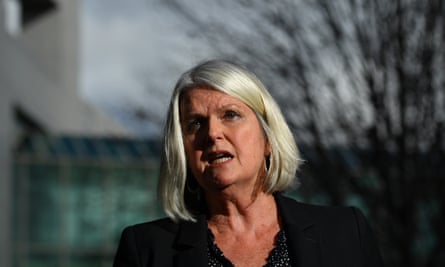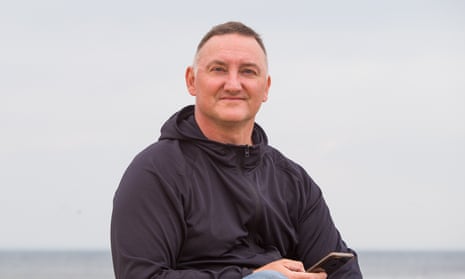It’s the lifeline that’s kept nearly 2 million people in New South Wales, Victoria and the ACT on a steady weekly income during Covid lockdowns.
Since June, the government’s Covid-19 disaster payments – paid at either $750 or $450 a week, or $200 a week for existing welfare recipients – have been available to people who lost work due to stay-at-home restrictions.
First announced by the commonwealth somewhat reluctantly after Melbourne went into lockdown in June, the payments were bolstered to their current rates when the Delta variant began to tear through NSW and Victoria.
But now, with NSW and the also recently locked-down ACT hitting the 80% vaccination target and Victoria on the verge of doing the same, the payments are set to disappear.
Announcing the plan to end the payment in late September, the treasurer, Josh Frydenberg argued “the economy is well-positioned to bounce back” once restrictions were eased.
“Employment outcomes will improve,” Prof Jeff Borland, a labour market expert at the University of Melbourne, says of the end of lockdowns. “But I think there’s still a decent amount of uncertainty about whether the bounce back will be as strong as last year.”
What this means, experts say, is that while some workers will have no need for the disaster payments because their jobs were waiting for them once restrictions eased, others may find their hours are insufficient, or non-existent, because their employer is not operating at full capacity.
That might be because of capacity restrictions on certain industries under the different state government roadmaps, or because of an initial lack of demand as the economy takes some time to whir back to life.
Sean, a 50-year-old photographer from Melbourne who does not want his surname used, makes most of his money working for a school photography company. He also does freelance jobs, including shooting sports and fitness events.
After withdrawing some superannuation last year, Sean says the disaster payment has kept him afloat during these latest lockdowns.
“If I hadn’t received this payment at all, my savings would be down to zero,” he says. “Three and a half months ago, I sat down and did all the some sums over all this, and started crying.”
Under the federal government’s plan, the disaster payments will reduce to $450 in the first week after a state hits the 80% vaccination target, before dropping to $320 the following week.
After that, people will be directed to apply for the jobseeker payment, which is about $630 a fortnight, or $870 less than what Sean has been receiving every two weeks.
“The industry I rely on for my day job [school photography] is restricted, heavily restricted,” he says. “I feel bad for my boss. He can’t give us any work. Schools aren’t allowed to have us in their building. That’s the problem.”
During last month’s lockdowns, 1.1 million people in NSW had claimed the disaster payments, while 700,000 had done so in Victoria, and 66,000 in the ACT. Some have since moved off the support because recipients are now required to reapply weekly.
Angela Jackson, the lead economist at Equity Economics, believes the government is switching off the payments too quickly.
She fears as many as “tens, if not hundreds of thousands” of people may find themselves on jobseeker once the disaster payments end.
Prof Borland also believes the transition is “blunt”, but he is less gloomy, saying he doesn’t expect a “huge transfer” of people from disaster payments onto jobseeker. He adds, however, that there will certainly be those who do find themselves applying for the dole.
Those workers will join about one million people already on unemployment benefits, up from about 700,000 pre-pandemic.
“Overall it’s a very fast withdrawal of support compared to what happened last year under jobkeeper,” says Jackson.
“That said, what we have seen in the past couple weeks is a real fall in the number of people on those [disaster] payments, particularly in NSW and the ACT.”
Jackson says the amount being paid out in NSW has reduced from about $600m a week to $200m. Services Australia did not respond to a request for the data on the number of recipients on the payments.
Gavan Ord, the senior manager business and investment policy at CPA Australia, says not all businesses will be able to trade at 100% despite lockdowns ending.
He says people who normally work in the arts and live music industries, tourism and the events sectors will be hit hardest by the end of the disaster payments.

“It’s workers who miss out until businesses see that certainty and they see the return of customers,” he says.
Ord says many businesses in the CBD would also struggle as people continued to work from home.
James Power, the head booker at the Prince Bandroom in Melbourne, is “incredibly worried” by the end of the disaster payments.
The Prince Bandroom is one of dozens of venues that has joined a campaign, Save Our Scene, arguing Victoria’s roadmap is unviable for the music industry.
Power says some of the people who keep the industry ticking – bar tenders, bookers, promoters, technicians, and the musicians themselves – were facing weeks without pay.
“It’s such a marginal business we need to operate at 100% capacity for it to work,” he says. “If we’re not going to, we’re asking for ongoing financial support until we return to 100% capacity.”
When the government announced its plan to end the disaster payments, the Australian Unemployed Workers Union described the move as “disastrous”, saying the “only certainty’ this provides many low-income households is that a life of grim poverty is definitely in their immediate future”.
Jackson agrees about the jobseeker rate. “What we will be doing is putting people into abject poverty, well below the poverty line, where they can’t meet the basic costs of living,” she says.
Cassandra Goldie, the chief executive of the Australian Council of Social Service, argues the government’s decision to introduce the disaster payments was an acknowledgement jobseeker was “completely inadequate”.
“It’s not good enough to say that people can claim the $45 a day jobseeker payment if they continue to be out of paid work after reaching vaccination targets,” she says.
Goldie also warns that not all people can access jobseeker, such as temporary visaholders. “If they cannot get a job after disaster payments cut out in a matter of weeks, they will be left with no income.”
Jobseeker is also subject to a liquid assets test, while the disaster payments were not. It means a single person with $10,000 in savings would have to wait 10 weeks before getting their first jobseeker payment.
With the disaster payment ending, Sean, who withdrew some superannuation last year, will have to use up much of those savings before he can get any support.
“Four weeks from now, I will be at zero income,” Sean says. “It’s a pretty big deal.”

Comments (…)
Sign in or create your Guardian account to join the discussion